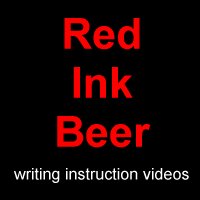Our new friend, an English teacher from Iran, poses another complicated question about the use of “any.”
Which choice is correct? Please explain your reasons.
“English is not my mother tongue language. But I don’t have any ………… when I speak with native speakers of English. I can understand them very well.”
a) problems
b) problem
Short answer
This is a good question, but one without a clear answer. The short answer is that “any problems” is the more common way to say this. (Another common way to say this is “I don’t have a problem.”)
See here for a comparison of usage: http://bit.ly/WnAsbR
But this is sneaky. Let’s look at the long answer.
Long answer
If I say, “I don’t have any problems,” then I admit the possibility that I may have one problem. If someone asks me, “Do you have any problems,” I can correctly answer “no” if I have a single problem. I don’t have problems, but I do have a problem. Then, when the problem occurs, a person may say, “Hey, you said you didn’t have problems,” and I can answer, “That’s right. I don’t have more than one problem, but I do have one problem.” As I said, this is a sneaky way to answer.
On the other hand, if I say, “I don’t have any problem,” then I allow the possibility that I have more than one problem. If someone asks me, “Do you have any problem,” I can correctly answer “no” if I have several problems. I don’t have just one problem, but I have several problems. Then, when problems occur, the person can say, “Hey, you said you didn’t have a problem,” and I can answer “That’s right. I don’t have a single problem, but I do have more than one problem.” This, too, is a sneaky way to answer.
The answers are sneaky because the literal meanings may conflict with the implied meanings. I say one thing, and the listener thinks I mean something else. I answer that I don’t have one problem, or don’t have multiple problems, but the listener will assume I mean zero problems.
To get back to the original question, you have two options.
1. Most common way to say this: “any problems.”
2. Literal answer: Choose “I don’t have any problem” to indicate you don’t have a single problem or choose “I don’t have any problems” to indicate you don’t have multiple problems.
My recommendation: use “any problems.” If you have one problem, you are likely to have other problems, too. If you use “any problems,” the message you send is that not even one problem will occur, thus covering all possibilities.
Perhaps our friend will ask a question about “that” and “which.” By comparison, the answer is much simpler.



